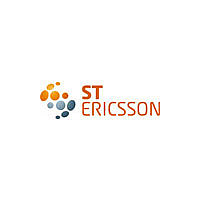ISP1507B1HNTM STEricsson, ISP1507B1HNTM Datasheet - Page 32

ISP1507B1HNTM
Manufacturer Part Number
ISP1507B1HNTM
Description
Manufacturer
STEricsson
Datasheet
1.ISP1507B1HNTM.pdf
(78 pages)
Specifications of ISP1507B1HNTM
Lead Free Status / RoHS Status
Compliant
Available stocks
Company
Part Number
Manufacturer
Quantity
Price
CD00269905
Product data sheet
For more information, refer to UTMI+ Low Pin Interface (ULPI) Specification Rev. 1.1.
b. Host chirp: If the host does not detect the peripheral chirp, it must continue
c. High-speed idle: The peripheral must detect a minimum of Chirp K-J-K-J-K-J. Each
than 7 ms after reset time T
up its clock within 5.6 ms, leaving 200 μs for the link to start transmitting the
Chirp K, and 1.2 ms for the Chirp K to complete (worst case with 10% slow clock).
asserting SE0 until the end of reset. If the host detects the peripheral Chirp K for
no less than 2.5 μs, then no more than 100 μs after the bus leaves the Chirp K
state, the host sends a TXCMD (NOPID) with an alternating sequence of Chirp Ks
and Js. Each Chirp K or Chirp J must last no less than 40 μs and no longer than
60 μs.
Chirp K and Chirp J must be detected for at least 2.5 μs. The peripheral sets
TERMSELECT = 0b and OPMODE[1:0] = 00b after seeing the minimum Chirp
sequence. The peripheral is now in high-speed mode and sees !squelch (01b on
LINESTATE). When the peripheral sees squelch (10b on LINESTATE), it knows
that the host has completed chirp and waits for Hi-Speed USB traffic to begin. After
transmitting the chirp sequence, the host changes OPMODE[1:0] to 00b and
begins sending USB packets.
Rev. 03 — 26 July 2010
0
. If the peripheral is in low-power mode, it must wake
ISP1507A1; ISP1507B1
ULPI HS USB OTG transceiver
© ST-ERICSSON 2010. All rights reserved.
32 of 78












